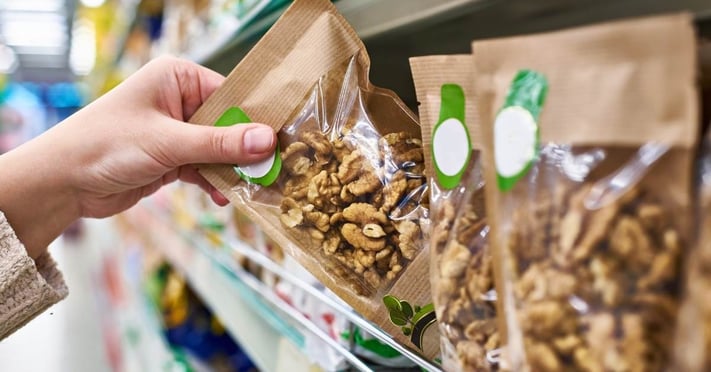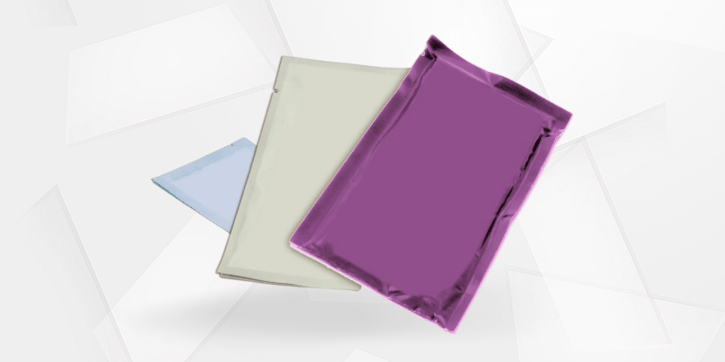In many industries, heat-sealed pouches have become an efficient and cost-effective way to send product samples, and sometimes even products themselves to customers. Heat-sealed packets are highly versatile as they can be made with many different materials and come in many different sizes. Because of their versatility, they are used in many industries for many different kinds of products. And a new demand for custom samples and products has risen in consumers that make re-sealable and disposable pouches as a good way to fulfill lot size one orders for small items. The small and portable pouches are also perfect for the current grab n’ go culture. Anything from snacks to beauty creams to medicine, the pouches can hold a little bit of everything and fit easily inside bags. Looking to start using heat-sealed sample packets or looking to automate your pouch packaging process? From verifying barcodes to labeling pouches, there are many opportunities for automation. Here’s our guide on automating your pouch packaging process.

Materials Matter
When you’re thinking of automating your pouch packaging process, considering your materials is the first step. You will want the pouch materials to fit both your brand needs as well as automation ability.
Composition
The composition of pouches depends on your application and product needs. For example, food items, the sample packets must be made out of material that is FDA food safe and overall designed for long and stable shelf life. Light permeation is another factor to think about when choosing materials for your pouches. Some products are sensitive to light or would degrade under constant light. Materials such as plastic-coated foil can be used if light permeation is an issue.
Texture
The texture of the pouch can hinder the movement when the pouches are stacked or next to each other. Highly textured materials cause too much friction and the pouches will not separate. Another problem that arises when moving two pouches together is static electricity. Static electricity can make it hard for the pouches to separate from each other, causing delays in the automation process. Surface coatings or printings that add texture also dramatically affect the coefficient of friction of the product and how they slide against one another.
Rigidity
The pouch material must also be mildly rigid for the automation process. If a pouch is not thick enough, or the material it’s made from is inherently pliable, it could be too flimsy for the automation process. A pouch should be, at a minimum, mildly rigid to allow for automated separation. If a pouch is too flimsy, it will bunch up during the separation process and cause jams and delays. Longer or wider pouches will often require a more rigid material to feed well compared to smaller products.
Other Factors
Other than materials, there are many other factors that affect the automation process. How the pouches were packaged by the pouch manufacturer can change the shape of the pouches. Many pouches will form a “memory” of the shape they are left in during transit and before use. It is important for pouches to be as flat as possible for the automation process. If the pouches are bent or curled it could make them harder to send through machinery, as the bent parts could get caught and cause a jam. It is recommended that you work with your manufacturer to create a protocol for packaging. The protocol should have the pouches in small stacks that alternate directions to make the bags lay as flat as possible. Alternating the direction of the stacks is often required due to the asymmetry caused by a zipper on the pouch, usually to make the bag re-sealable. The zipper’s size and placement dictate how asymmetrical the stack will be. A larger zipper or a zipper at the edge of a pouch will stack differently than a pouch with no zipper.
.png?width=1200&name=Add%20a%20heading%20(1).png)
A Successful Packaging Automation Process
The next step after finding the right pouches for your products is deciding what is the most efficient way to automate the pouch packaging process. Common processes that are automated with heat-sealed sample pouches are separating the pouches for applications such as applying labels or verifying barcodes.
Pick and Place
The Pick and Place process uses suction cups to pick up the pouches to separate them. This method is challenging to set up with pouches. The products are usually not stacked vertically on top of one another, but instead upright like books on a shelf with tabs that prevent them from slipping out of the stack. Pouches are more flimsy than products that normally use this method so it is difficult to get them to stand on their edges and to be held on the edge by the tabs. It is challenging to get loading capacity and reliable operation with a rotary pick and place. This leaves indexing pick and place as the primary option, which is much slower in speed than the other available methods.
Top Sheet Feeding
Using a feeder for automated separation is a much more stable approach. Top sheet feeding is using some form of vacuum to separate the pouches from the top of the stack. This is not an ideal way to feed pouches as it is not an efficient way to stack and move pouches. Because the feeder takes from the top there is no way to continuously re-fill the stack without stopping the process. Top feeding also is usually only used when the products are heavy and taking from the bottom is too difficult. Most sample packets are light enough in weight that they can use friction feeding.

Friction Feeding
Friction Feeding is the recommended automation technique. Using a friction feeder, pouches can easily be automatically separated. Friction feeding takes from the bottom of the stack using friction caused by the feeder’s separation wheels and belts. For successful friction feeding, often vacuum feed belts will be necessary to best grip the pouches as they go through the friction feeder. And while choosing the right packaging materials is important for a smooth automation process, the same is true for choosing the right equipment. Feed belts and separation wheel materials should be chosen to work with the pouch material for effortless automation. Another challenge is pouches due to their asymmetry do not stack well in the traditional friction feeder set-up that relies on even stacking. Often a product loader or flat infeed conveyor are used for loading capacity. In this way, pouches are shingled out on the conveyor which then continuously tops off the feeder, giving loading capacity without having to vertically stack the product.
It is recommended you use a friction feeder that has both top and bottom discharge hold-down belts, such as an MFT ip3 350 to properly transport the pouches after separation. Below are a few examples of applications featuring packets.
Feeding Pouches
Feeding Pouches with an Automated Product Loader (APL)
Feeding and Applying Labels on Top of Pouches
We hope this guide was helpful in your exploration into packing automation solutions. If you’re interested in learning more about these friction feeders and other automation solutions for your product, we’re happy to help. Get in touch with one of our automation experts or check out some of our friction feeders and other packaging automation solutions.
Click the button below and send samples of your product to us for a complimentary evaluation and test video.



